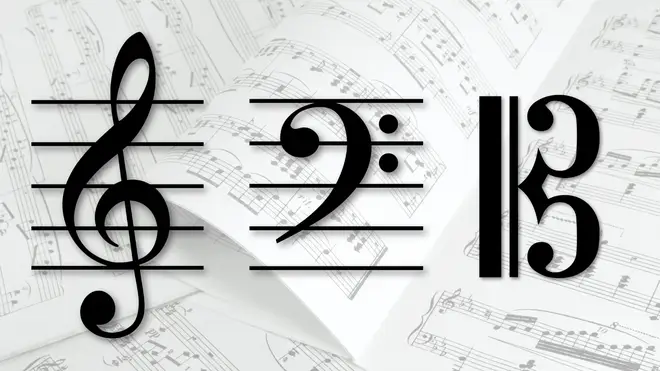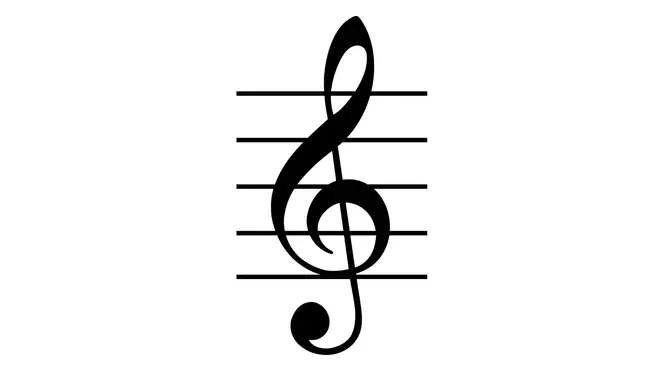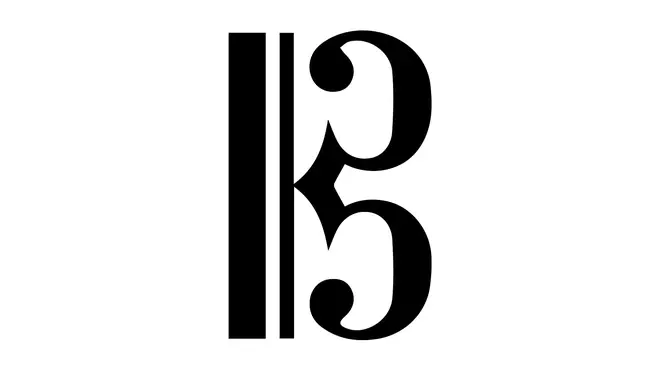On Air Now
Calm Classics with Myleene Klass 10pm - 1am
5 October 2023, 12:00 | Updated: 5 October 2023, 12:10

We see clefs at the start of all musical scores and staves. But what are they telling us and why do they look the way that they do?
At the top of every score, and the beginning of every stave, repeated on every line, is a symbol that, to seasoned musicians, becomes so familiar as to be invisible.
The humble but mighty clef.
Clef is a name derived from the same French word, which means ‘key’.
Take the quiz: Can you name all these musical clefs?
A clef is a symbol used in music notation to indicate which notes, or pitches, are represented by the lines and spaces on a stave.
Placing a clef on a stave assigns a particular pitch to one of the five horizontal lines, which defines the pitches on the remaining lines (i.e. those drawn above or below the stave) and spaces.
Clefs appear at the beginning of a stave (which is read from left to right) and they indicate pitch in two main ways: what shape they are, and the position on the stave they are plotted.
Read more: What’s the difference between a sharp and a flat note?
A clef helps to indicate what key a piece of music is in. It has the power to change pitches as they are read and interpreted from a score.
Theoretically, any type of clef can be placed with its base on any line on the stave. With five lines on the staff and three different types of clefs (see below), there are technically 15 possibilities of clef.
Six of these are redundant, though, because they result in an identical assignment of the notes to the lines and spaces. For example, a G-clef on the third line yields the same note placement as a C-clef on the bottom line.
Only nine different clefs have been needed throughout classical music history.
Read more: Why are there only 12 notes in Western music?

Classic FM Music Teacher of the Year Awards with ABRSM – meet our winners of 2023!
There are three categories of clef: F-clef, G-clef and C-clef.
When these clefs are placed on a line, they fix a reference note to that line: an F-clef says that line must be the F below middle C, a G-clef says the line it is placed on is G above middle C, and C-clef is exactly that: placed on the line that is middle C.
Within these three types are individual clefs, some are used more than others.
The most famous, and only-used G-clef today, is the ‘treble clef’, which is the most common clef used in Western classical music, and the first one we get introduced to in our theory lessons. It’s a curly shape, sort of a circle with a tall head attached, and a little tail with an extra curl on the end.
If you draw it from the centre, you start it on the second line from the bottom of the stave, defining that as the G above middle C.

Another common clef is the bass clef. The bass clef is the only F-clef still in common use, and can be seen in the second stave of a standard piano score – or the piano left hand. The bass clef is like the letter ‘c’, but flipped horizontally so it’s a back-to-front ‘c’.
When the F-clef is placed on the third line, it is called the baritone clef. This clef used to be used for the left hand of keyboard music, and is now mostly seen in the baritone parts of vocal music.

The third most common clef is a type of C-clef, and it’s the mainstay of viola players across the land: the alto clef (some people just call it ‘viola clef’ for this reason).
The alto clef is sort of like two back-to-front Cs, placed either side of the pitch it’s indicating, which is the middle line of the stave: the middle C.

A similar clef is the tenor clef, another C clef but it makes the second-top line of the stave the middle C.
Here they all are, neatly laid out:

The treble clef, a G-clef, is used by violin, flute, oboe, cor anglais, clarinet, saxophone, French horn, trumpet, cornet, vibraphone, xylophone, mandolin, recorder, bagpipe and guitar players, as well as other instruments in some contexts.
The bass clef, an F-clef, is used by cello, double bass, bass guitar, bassoon, contrabassoon, bass recorder, trombone, tuba, timpani and some other players. It’s also used in the second lowest line in harp and keyboard scores.
The alto clef, a C-clef, is used by viola, viola d’amore, alto trombone, viola da gamba, and mandola players. It is also associated with the countertenor voice, and so fittingly called the countertenor clef.
The tenor clef, another C-clef, is used by viola da gamba players, and for upper ranges of bass clef instruments such as the bassoon, cello, euphonium, double bass, and tenor trombone.